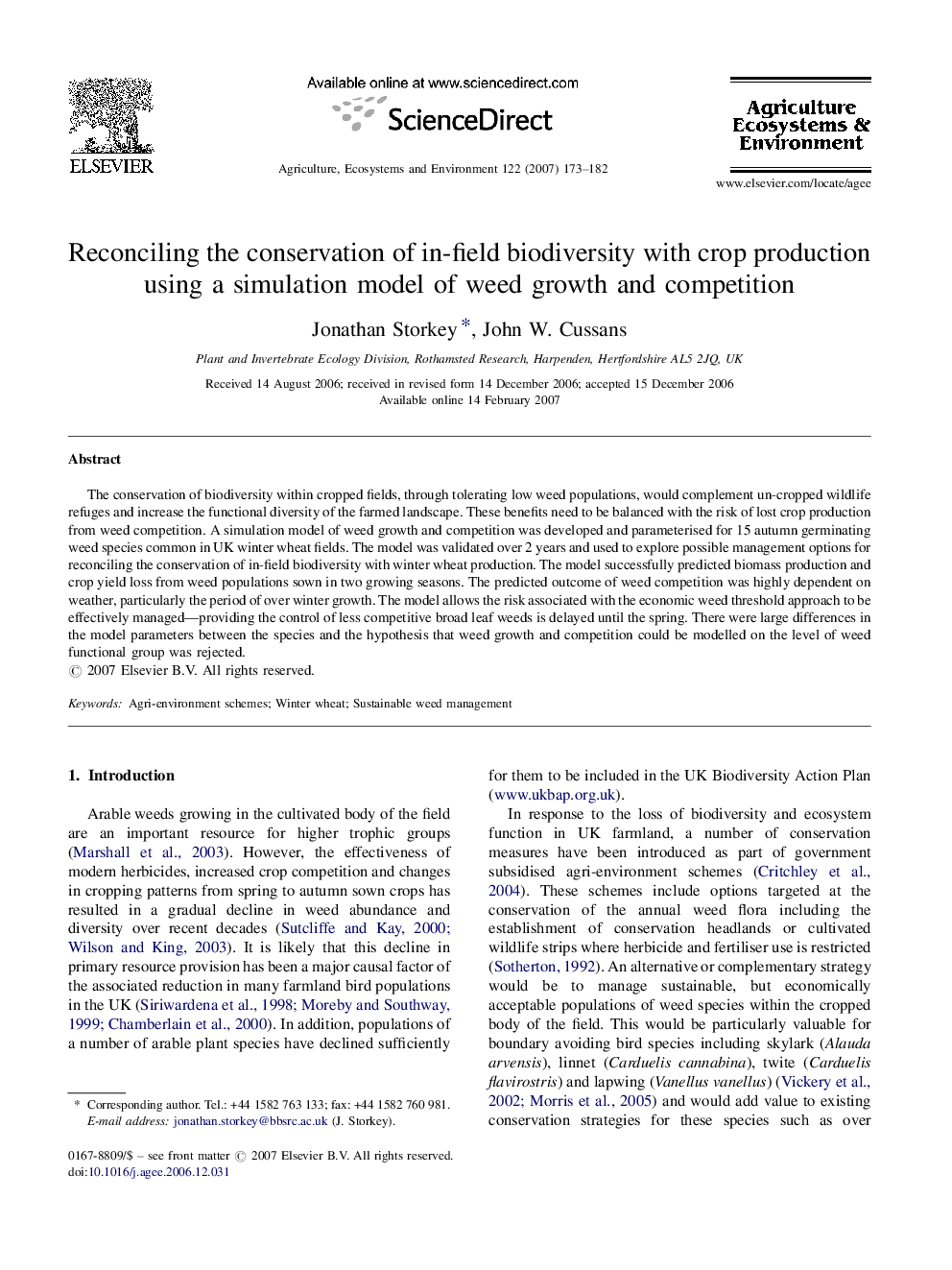| Article ID | Journal | Published Year | Pages | File Type |
|---|---|---|---|---|
| 2415643 | Agriculture, Ecosystems & Environment | 2007 | 10 Pages |
The conservation of biodiversity within cropped fields, through tolerating low weed populations, would complement un-cropped wildlife refuges and increase the functional diversity of the farmed landscape. These benefits need to be balanced with the risk of lost crop production from weed competition. A simulation model of weed growth and competition was developed and parameterised for 15 autumn germinating weed species common in UK winter wheat fields. The model was validated over 2 years and used to explore possible management options for reconciling the conservation of in-field biodiversity with winter wheat production. The model successfully predicted biomass production and crop yield loss from weed populations sown in two growing seasons. The predicted outcome of weed competition was highly dependent on weather, particularly the period of over winter growth. The model allows the risk associated with the economic weed threshold approach to be effectively managed—providing the control of less competitive broad leaf weeds is delayed until the spring. There were large differences in the model parameters between the species and the hypothesis that weed growth and competition could be modelled on the level of weed functional group was rejected.
